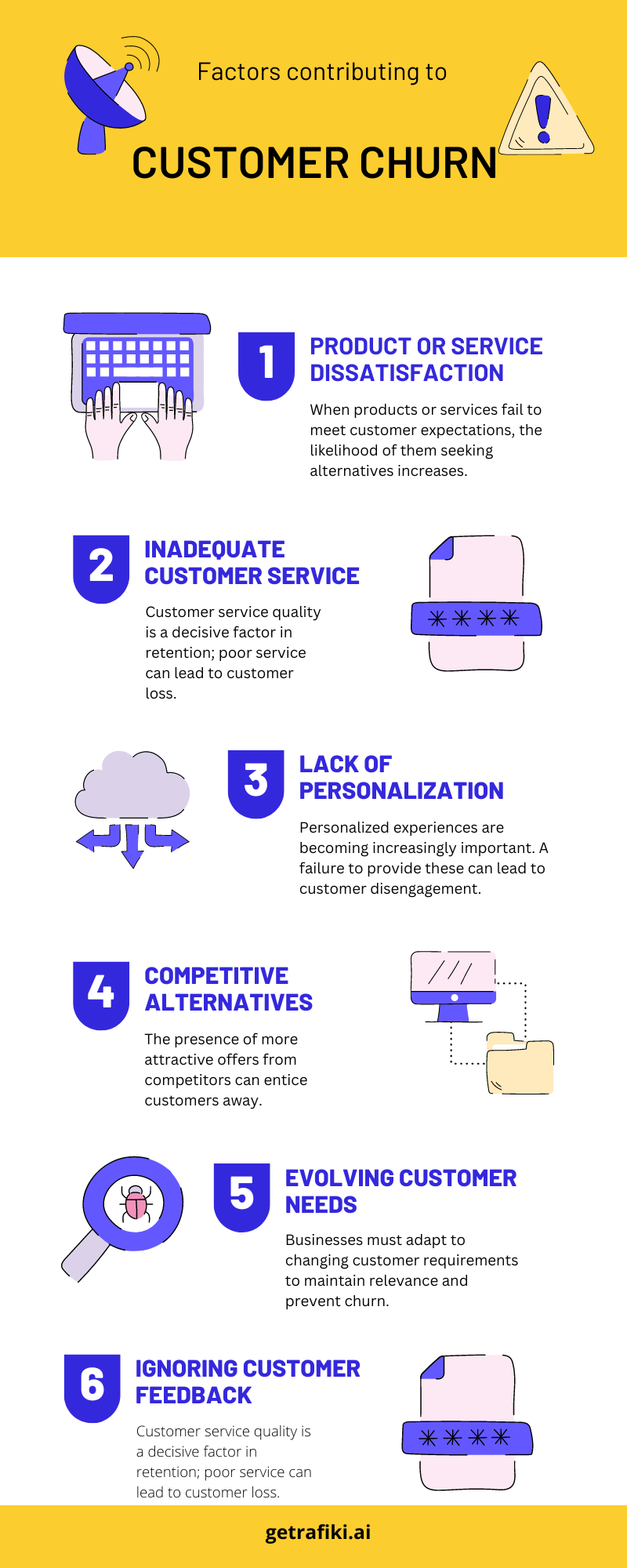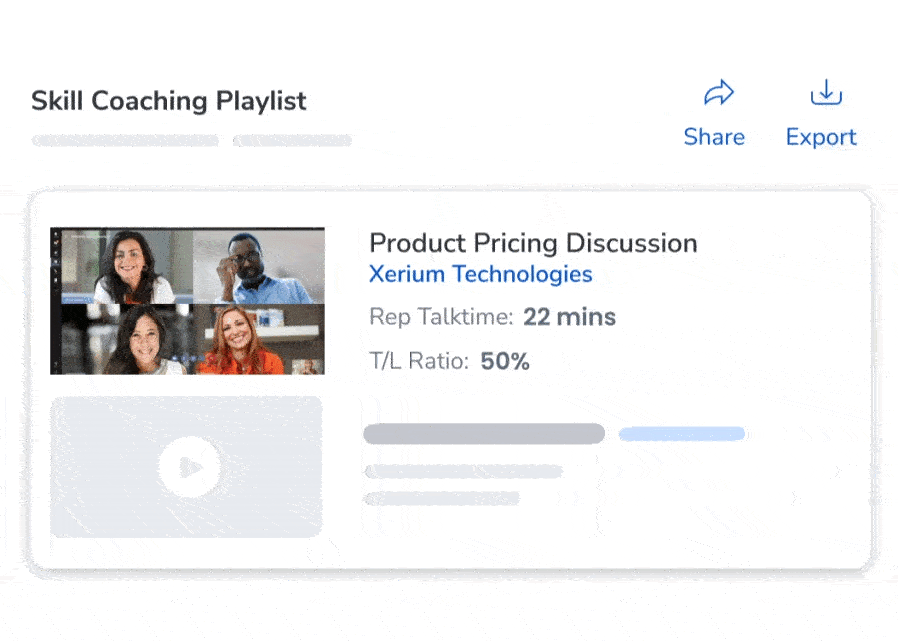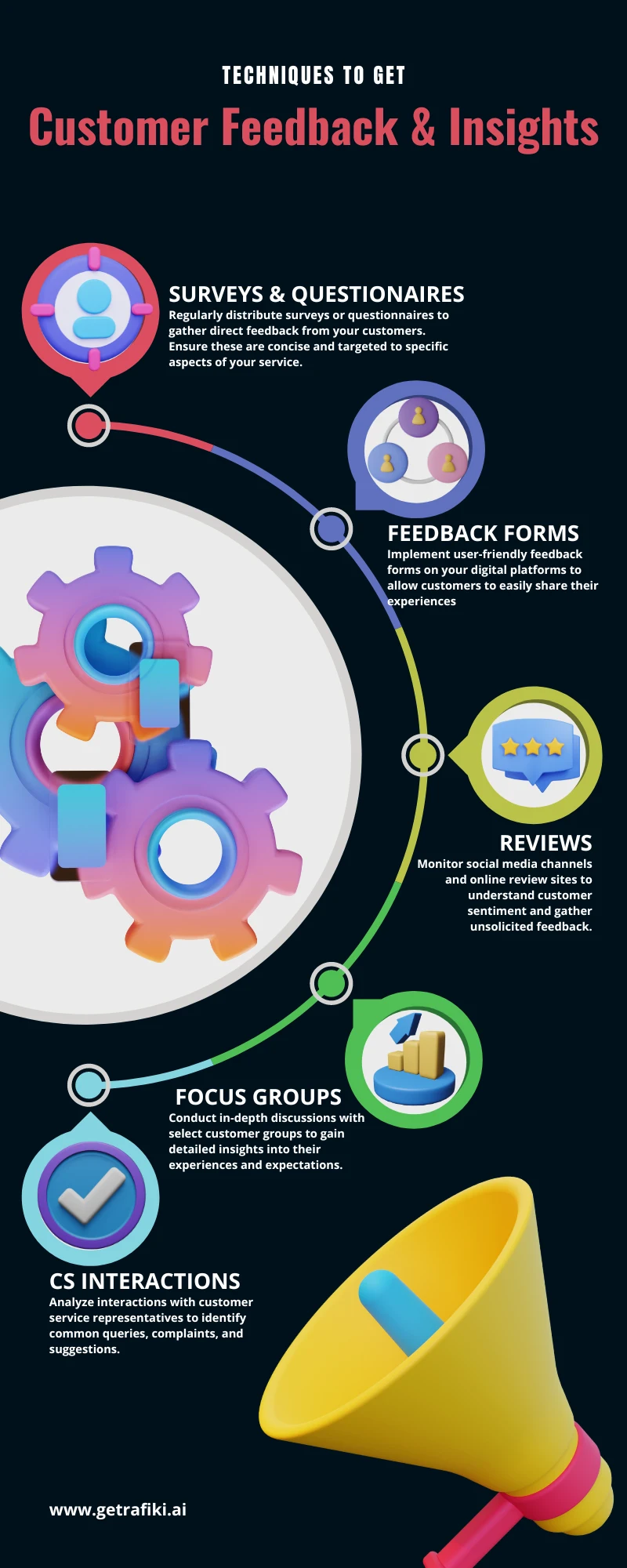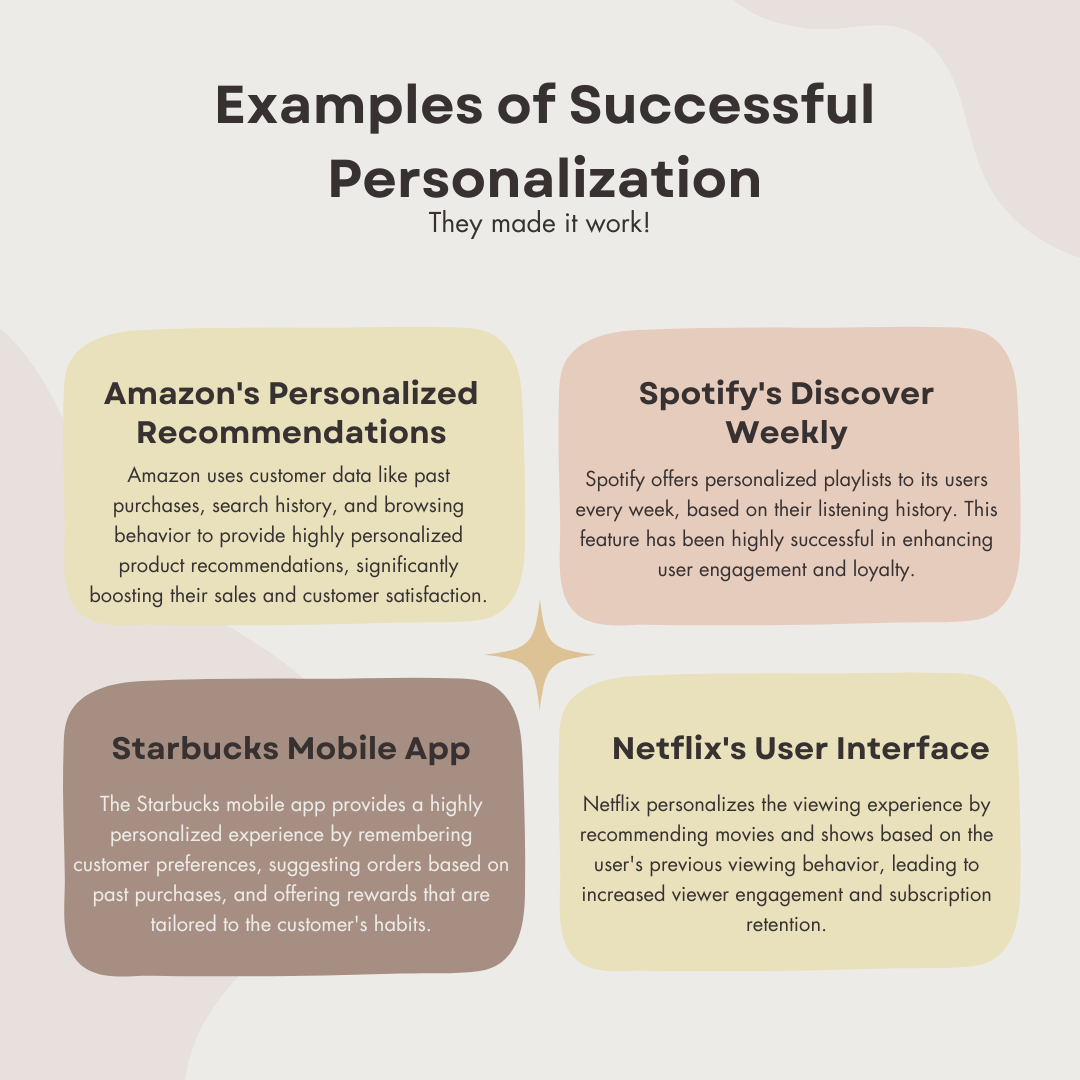10 Proven Strategies to Reduce Customer Churn and Boost Retention
Farewell, farewell, and softly go, they whisper as customers slip through your grasp. The silent killer of profits, customer churn, can leave even the most established businesses feeling empty and frustrated. But fear not! Within this blog, you’ll discover 10 data-driven, actionable strategies to combat churn and foster enduring customer relationships.
Imagine a world where loyal customers become your loudest brand advocates. A world where recurring revenue fuels your growth, and a steady stream of positive testimonials validates your efforts. This is the power of effective retention, and it’s within your reach.
Retaining customers is vital for business success, yet many struggle with churn. Let’s change that. Whether you’re a seasoned entrepreneur or a budding startup, these strategies offer practical solutions tailored to your needs. We’ll delve into:
- Identifying early warning signs of churn before it’s too late.
- Crafting personalized experiences that resonate with your audience.
- Building trust and loyalty through effective communication and support.
- Optimizing your value proposition to deliver on promises and exceed expectations.
- Leveraging data insights to continuously improve your retention efforts.
So, ditch the churn blues and embrace the retention revolution. Dive into this blog and unlock the secrets to building a thriving customer base that fuels your success for years to come.
Early Warnings: Spotting Churn Early
In the battle against churn, your best weapon is foresight. Like a captain navigating treacherous waters, you must be vigilant for the early signs of discontent. This begins with understanding customer behavior patterns and engagement levels. Are your customers using your product less frequently? Have they stopped opening your emails? These are the canaries in the coal mine, signaling potential trouble ahead.
Personalization Magic: Tailoring Customer Experiences
In a world awash with options, personalization isn’t just nice to have; it’s a must. Tailoring experiences to individual preferences and needs can transform a passive user into an active advocate. This could mean recommending products based on past purchases, customizing communication, or offering personalized support solutions. Remember, in the eyes of the customer, a tailored experience is a testament to your value.
Trust Building: Strengthening Customer Bonds
Trust is the foundation of any lasting relationship, and customer relationships are no exception. Every touchpoint, from sales to support, is an opportunity to build trust. This means transparent communication, reliability in delivering services, and a genuine commitment to resolving issues. When customers trust you, they’re more likely to stick with you, even when the going gets tough.
Value Delivery: Exceeding Expectations
Your value proposition is your promise to your customers. But are you keeping that promise? Continuously delivering and enhancing value is crucial to keeping churn at bay. This might mean rolling out new features, improving user experience, or simply ensuring your product or service consistently meets high-quality standards. When customers see ongoing value, they’re reminded why they chose you in the first place.
Data Insights: Leveraging Analytics for Retention
In the age of Big Data, intuition just doesn’t cut it anymore. Leveraging data analytics can uncover invaluable insights into customer satisfaction, product usage, and more. This information allows you to make informed decisions, tailor your retention strategies, and even predict which customers might be at risk of churning. Armed with data, you’re not just reacting; you’re anticipating and adapting.
By implementing these strategies, you’re not just reducing churn; you’re cultivating a garden of loyal customers who will grow alongside your business. Remember, every customer saved is a step towards sustainable growth and success. So, take these strategies to heart, apply them with care, and watch as your customer base transforms from fleeting to flourishing.
Engagement Boost: Enhancing Communication
In the tapestry of customer relationships, each thread is woven with communication. It’s not just about the frequency of interactions, but their quality and relevance. Establishing regular, meaningful dialogue with your customers can significantly reduce churn. This involves more than just promotional emails; it’s about providing valuable content, asking for feedback, and keeping customers informed and engaged. Whether it’s through personalized email campaigns, social media engagement, or community forums, every message should add value and reinforce the customer’s decision to choose you.
Feedback Loop: Turning Opinions into Improvements
Listening is an art, and in the context of customer retention, it’s a strategic imperative. Actively seeking and responding to customer feedback not only helps in improving your product or service but also shows customers that their opinions matter. Implementing a systematic approach to gathering feedback, such as regular surveys, suggestion boxes, or direct outreach, and then acting on that feedback, closes the loop and fosters a sense of community and co-creation among your user base.
Loyalty Rewards: Incentivizing Long-Term Relationships
While acquiring new customers is exciting, cherishing the ones who have stayed with you can create a loyal base that’s worth its weight in gold. Implementing loyalty programs or offering exclusive benefits to long-term customers can significantly enhance retention. This could range from loyalty discounts and referral bonuses to early access to new features or products. Such gestures not only reward loyalty but also incentivize continued engagement and advocacy.
Seamless UX: Streamlining Customer Journeys
In the digital age, a seamless user experience (UX) is non-negotiable. A user-friendly interface, intuitive navigation, and minimal friction points are crucial in keeping customers satisfied and engaged. Regularly auditing your UX across all platforms and touchpoints can help identify and eliminate any obstacles that might lead to frustration and, eventually, churn. Remember, a smooth journey is key to keeping customers on board.
Proactive Support: Being There Before the Storm
In customer service, anticipation is the best form of defense. Proactive support strategies, such as monitoring for and addressing potential issues before they escalate, can significantly enhance customer satisfaction and reduce churn. This might involve predictive analytics to identify at-risk customers, automated help resources, or preemptive outreach to offer assistance. By being one step ahead, you demonstrate commitment to customer success, turning potential detractors into promoters.
By weaving these strategies into the fabric of your customer retention plan, you create a resilient, loyal customer base. Each approach, from communication to proactive support, plays a pivotal role in not just reducing churn but in building a community of satisfied, engaged customers who are the true drivers of sustainable growth and success.
Using Rafiki’s AI to Reduce Customer Churn
In addressing customer churn, AI-based conversation intelligence tools like Rafiki offer innovative solutions that can significantly enhance customer retention strategies. These tools leverage advanced AI technologies to analyze customer interactions, providing valuable insights that can be used to prevent churn and foster stronger customer relationships. Here’s how Rafiki and similar platforms can aid in this endeavor:
Conversation Insights
Rafiki analyzes customer conversations, identifying key moments, sentiments, and topics of discussion.
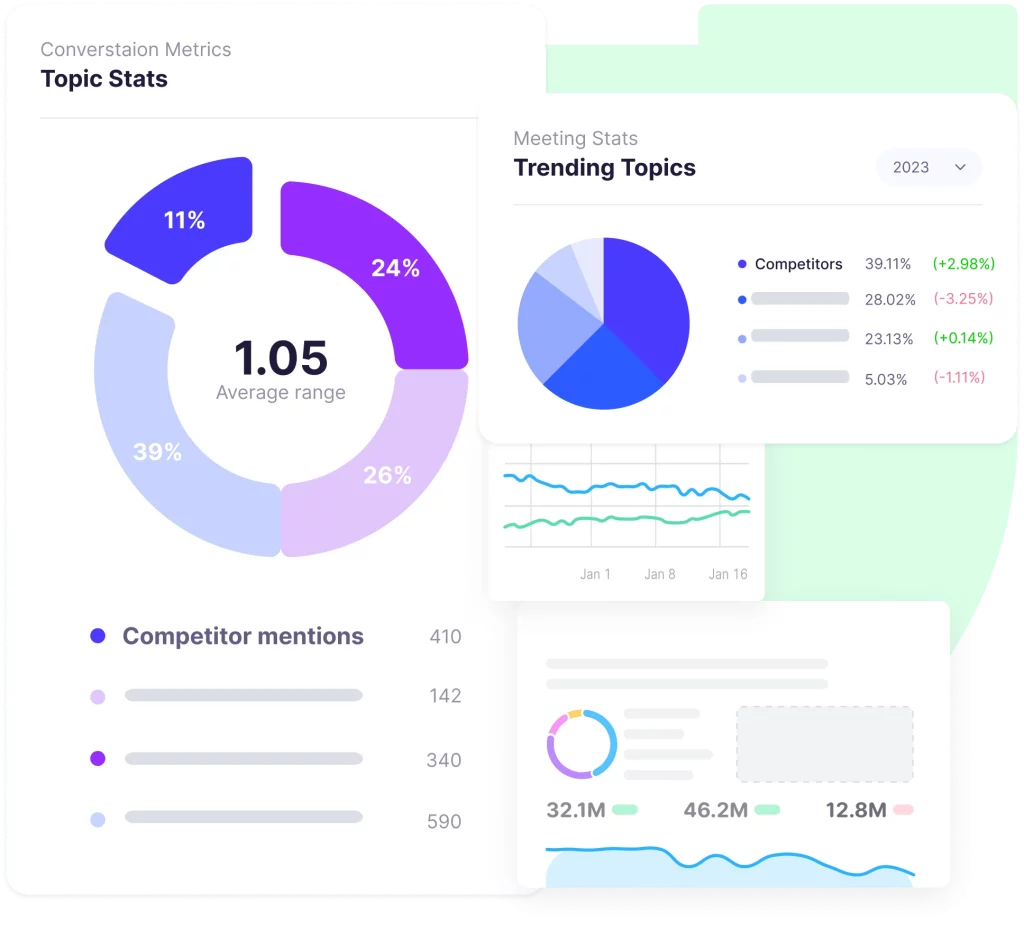
This analysis helps businesses understand customer concerns, preferences, and satisfaction levels, allowing for timely interventions before minor issues escalate into reasons for churn.
Predictive Analytics for At-Risk Customers
By employing machine learning algorithms, Rafiki can predict which customers are at risk of churning based on their interaction patterns and sentiment analysis.
This predictive insight enables businesses to proactively address customer dissatisfaction, personalize their outreach, and offer tailored solutions to retain these at-risk customers.
Enhanced Personalization
Rafiki’s deep learning capabilities allow for a nuanced understanding of each customer’s unique needs and preferences.
Armed with this knowledge, businesses can tailor their communication, offers, and support to match individual customer profiles, thereby enhancing personalization and improving the overall customer experience.
Optimizing Customer Support
Conversation intelligence tools can identify common pain points and queries among customers, enabling businesses to streamline their support processes.
By addressing these frequent issues more efficiently and effectively, companies can improve customer satisfaction and reduce the likelihood of churn due to support-related frustrations.
Training and Coaching Insights
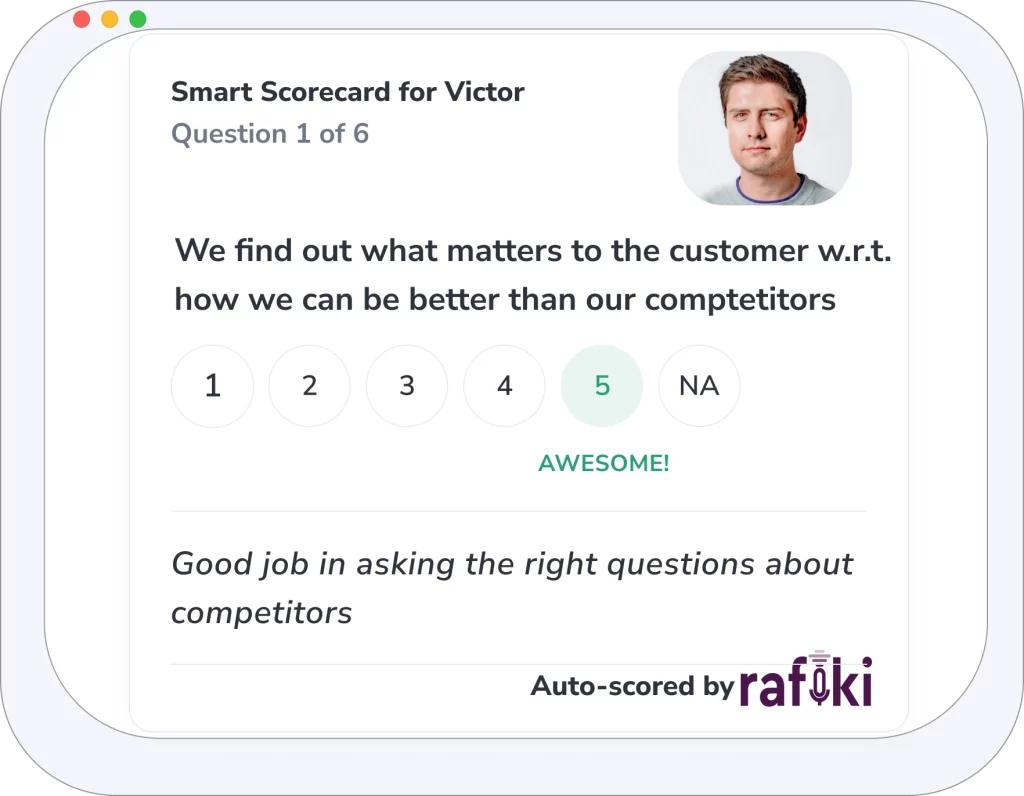
Rafiki provides actionable insights into sales and support team performances, highlighting successful strategies and areas for improvement.
These insights can inform targeted training and coaching programs, ensuring that customer-facing teams are well-equipped to engage positively with customers, address their needs, and foster loyalty.
Trend Identification
Through sentiment analysis, Rafiki gauges the emotional tone of customer interactions, offering a deeper understanding of customer sentiment over time. Additionally, by identifying trends in customer conversations, businesses can anticipate market shifts, adapt their strategies accordingly, and maintain relevance to their customer base.
Automating Follow-ups and Engagement
Rafiki can automate follow-up communications and engagement initiatives based on conversation outcomes, ensuring that customers receive timely, relevant content and offers. This continuous engagement helps keep the brand top of mind, strengthens customer relationships, and reduces the likelihood of churn.
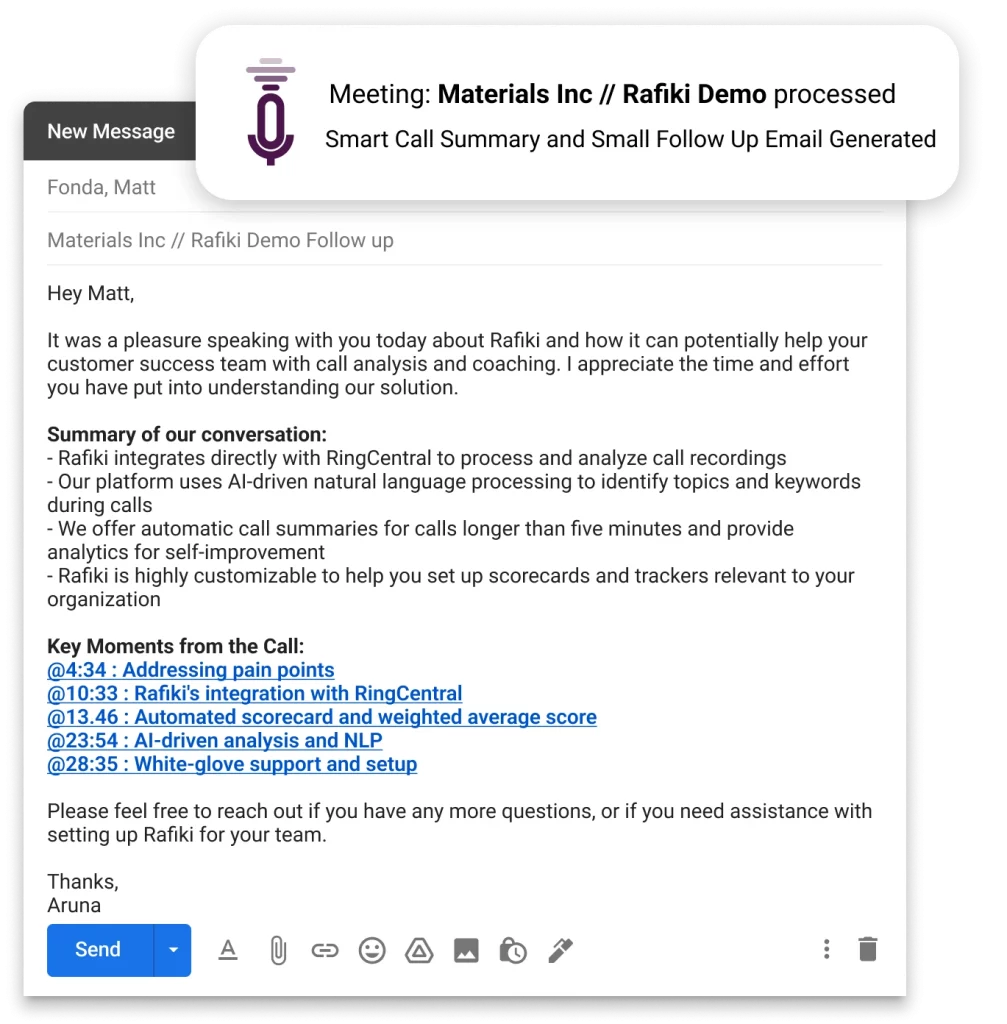
Incorporating AI-based conversation intelligence tools like Rafiki into customer retention strategies offers a data-driven approach to understanding and enhancing the customer experience. By leveraging the actionable insights provided by these tools, businesses can proactively address potential issues, personalize customer interactions, and ultimately, turn the tide on churn.
Summing Up
In conclusion, combating customer churn requires a multifaceted approach that combines personalized customer experiences, proactive engagement, and the strategic use of data-driven insights.
Empower Your Customer Connections, Transform Churn into Loyalty
Tools like Rafiki, with their advanced AI conversation intelligence capabilities, are game-changers in this arena, offering businesses the opportunity to understand and connect with their customers on a deeper level. By leveraging data-driven analytics, predictive modeling, and personalized engagement strategies, companies can effectively address the root causes of churn, enhance customer satisfaction, and foster lasting loyalty.
Embracing these innovative technologies and approaches empowers businesses to not only reduce churn rates but also to cultivate a thriving community of loyal customers, fueling sustainable growth and success in the competitive marketplace.
